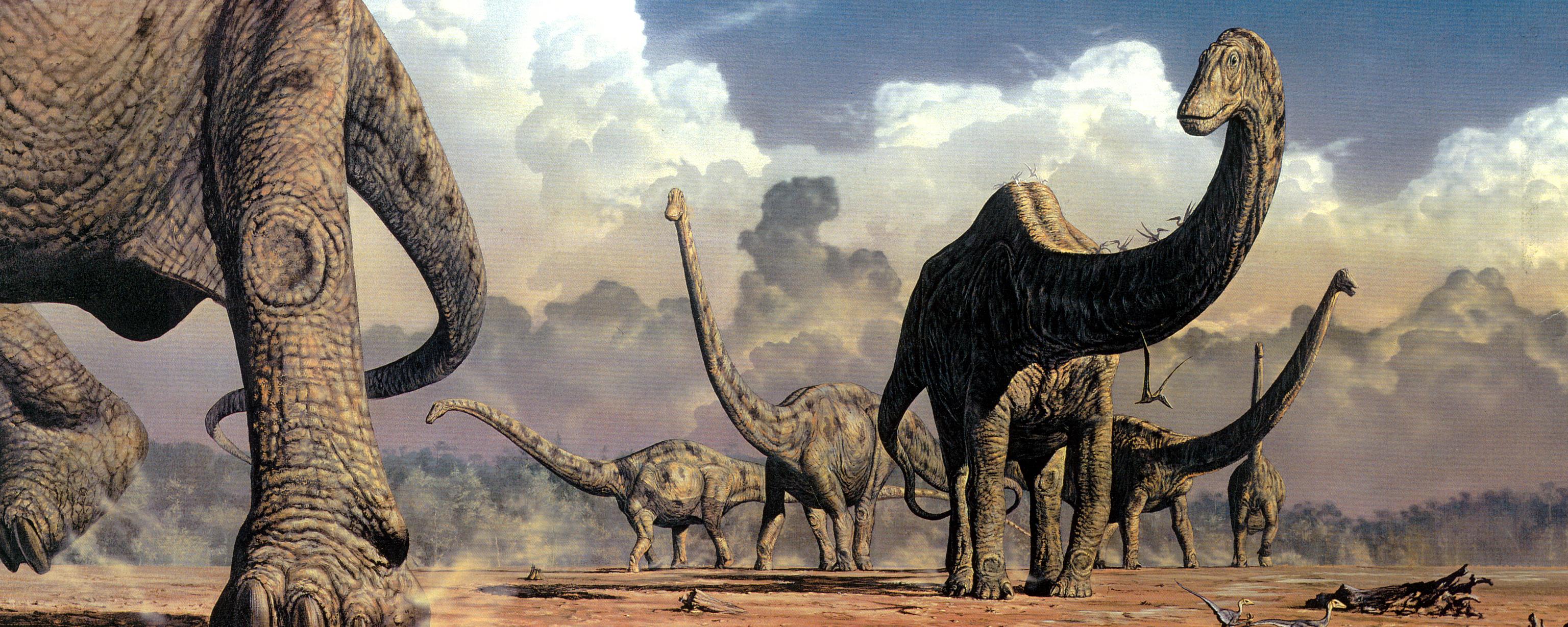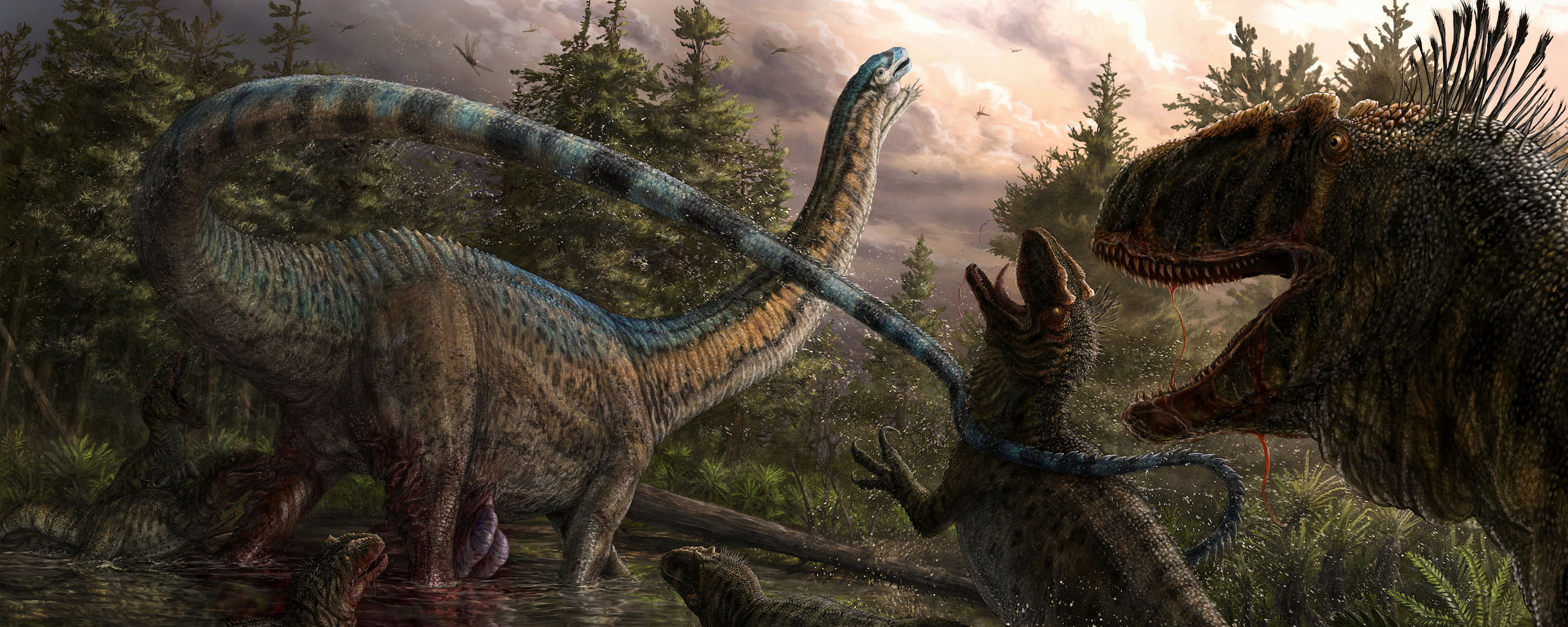


Key Points:
•Understanding the locomotion and other activity of dinosaurs is improved by studying biomechanics: reconstructing their actions using the principles of engineering and physics.
•Land animals range from more graviportal ones (adapted to weight support) toward cursorial ones (adapted to running). Some adaptations of limb and girdle features can be used to recognize trends to one or the other of these behaviors.
•As animals grow, their proportions do not necessarily remain the same. More often, there is some form of allometry: differential growth in proportion.
•Biomechanics is also used to estimate such attributes as bite forces and impact from weapons.
Fossils are our primary line of approach, both body fossils and trace fossils.
In the case of body fossils, a few traits (skeletal ones) can be read directly from fossils. Others (muscles, tendons, sense organs, and so forth) might have osteological correlates (that is, direct traces on the bone, even if they are not made of bone themselves.) Still others might be determined by biomechanical or other functional studies.
There are four main methods of inference in dinosaur biology:
Let's consider the issue of dinosaur locomotion. Dinosaurs are essentially striders: their hindlimbs were restricted to antero-posterior movement.
Deciding whether an animal is running or not is a trickier problem that it first sounds. The classic definition of running is "a gait in which there is a suspended phase" (that is, all feet of momentarily off the ground). We can generally approximate when a trackway has reached that point. However, the modern (or "kinetic") definition of running is "a gait in which the leg is at its most compressed at the middle of its contact with the ground" (like the spring on a pogo stick).
We can apply principles of functional morphology to understanding how dinosaurs operated: that is, work out the function of organisms by the shapes and structures of their body parts.
For instance, we recognize from their parasagittal limbs and digitigrade feet that dinosaurs were striders: they walked one foot directly in front of the other rather than with splayed limbs. Study of modern striders (mammals and birds) show a continuum from cursorial (running specialists) to graviportal (support specialist) forms. Cursorial animals tend to have:
while graviportal animals tend to have:
Examining these traits in dinosaurs, we find that some small ornithopods but especially many coelurosaurian theropods show cursorial adaptations relative to other dinosaurs, while stegosaur and ankylosaur thyreophorans and eusauropod sauropodomorphs show greater graviportal adaptations.
Of course, there are also issues of scaling: as body size increases, the mass supported by any surface (like the bottom of the foot) or cross-section (like the cross-section of the femur) increases faster, so the relative mechanical strength of the animal decreases. Body parts do not all grow at the same rate: that is, they often show allometry:
Functional morphology can also be used to examine the function of structures like stegosaur spikes, ceratopsian horns, etc.
One especially useful approach to functional morphology is biomechanics, or the use of the laws of physics and measurements of the physical properties of living tissue to infer the likely limits of strength, endurance, etc.
We can examine the strength of bone, tooth enamel, tendon, etc. in modern animals, and estimate the strength of muscles for a given cross-sectional area based on living animals. We can make computer models of parts of the dinosaur and see how they are affected by different loads
There are difficulties here, however. For example, there can be disagreement over such things as the posture of a given dinosaur, which would result in different models on how it would have moved.
An important but underappreciated part of the biomechanics of dinosaurs is the role of cartilage. Like modern archosaurs, it is likely that dinosaurs had substantial amounts of cartilage at the joints, which would affect limb length, energy absorption at the joints, range of motion, and so forth.
To Next Lecture.
To Previous Lecture.
To Lecture Schedule.
